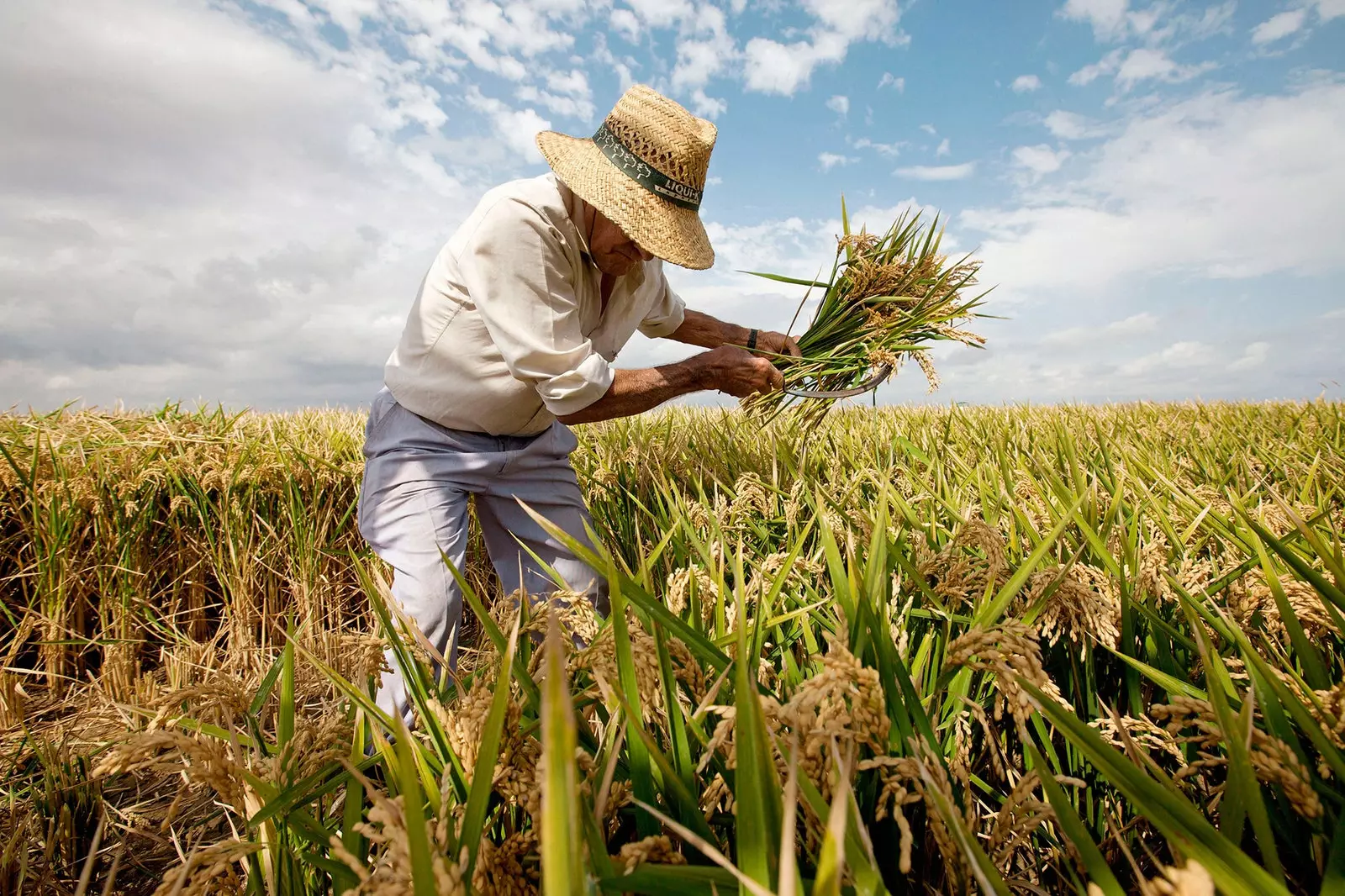
La Albufera hides a past (and sometimes a present) of much sweat, epics and tears.
When the evening sun dyes the waters of the great salt lake of the Albufera Natural Park, it seems that life stops and you can only hear the song of the birds and, when they are silent, the brief whisper of a sea breeze that likes to caress, with care, the reeds that escort some canals that have seen work, from sunrise to sunset, about men who put aside their tools decades ago.
10 kilometers from the city of Valencia is one of the most important coastal wetlands of the Iberian Peninsula. Nothing less than 21,000 hectares of land in which they live different ecosystems, ranging from the freest and wildest Mediterranean nature to the vast and endless rice plantations - which claim for themselves the honor of being the cradle of Valencian paella -, passing through virgin-looking beaches where the dunes stand proudly against a Mediterranean Sea that has always preferred to take things easy.
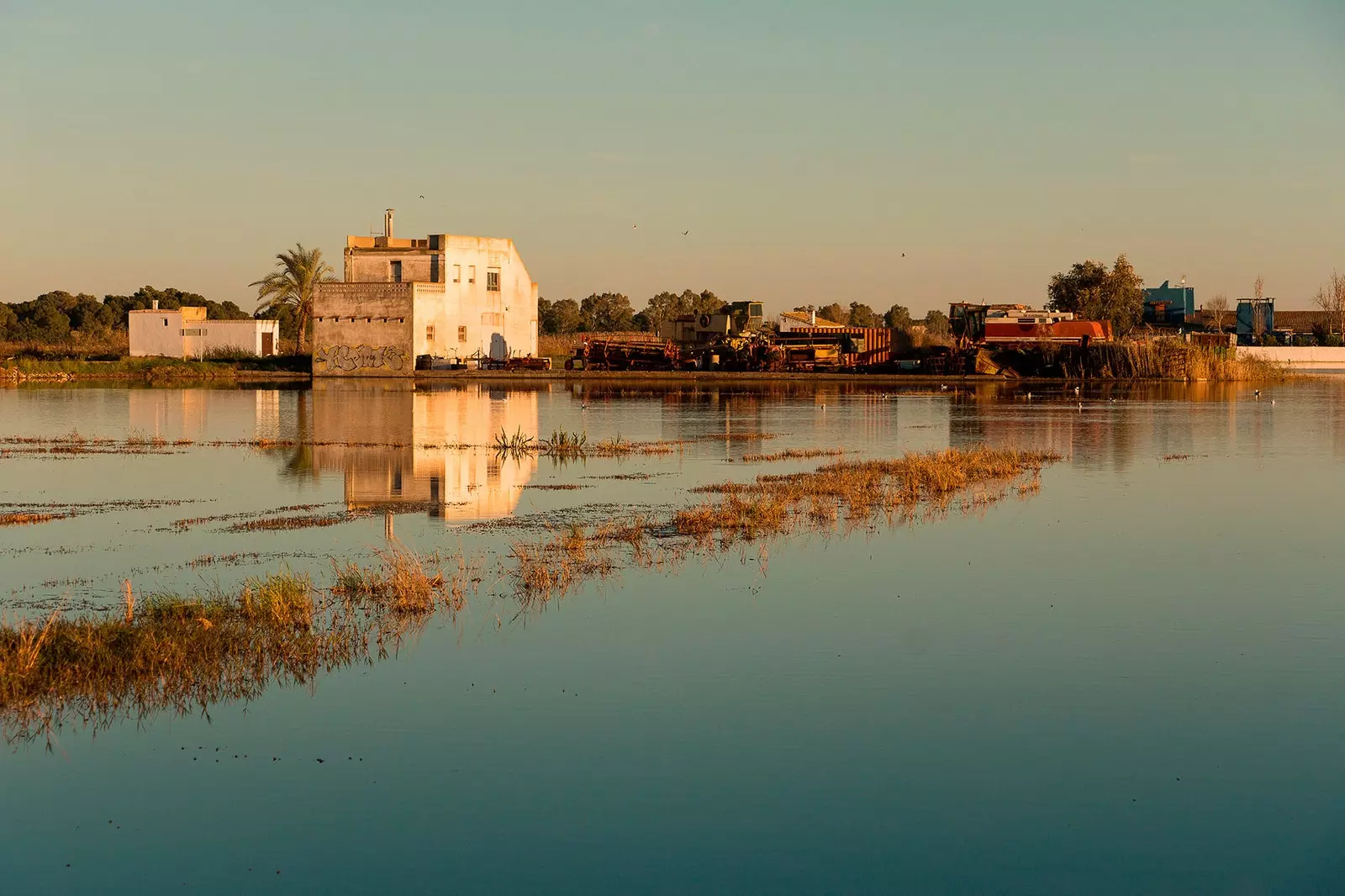
10 kilometers from Valencia, one of the most important coastal wetlands on the Iberian Peninsula
THE ALBUFERA OF BLASCO IBÁÑEZ, PROTAGONIST OF SPANISH NATURALISM
The Albufera de Valencia was declared nature park in 1986. However, its history goes back much further in time.
Part of her wanted to reflect it, with all possible crudeness and realism, the great Valencian writer Vicente Blasco Ibáñez, one of those classic Spanish cases of magnificent triumphs abroad – he was a famous writer in the United States, where his works were adapted for the cinema The Four Horsemen of the Apocalypse and Blood and Sand – That they are not so recognized in his homeland.
Blasco Ibáñez, who was born in 1867, he knew and lived La Albufera in which the workers broke down both on land and in the water, cultivating the rice fields and fishing in what is the largest natural lagoon in Spain, which reaches the same proportions as the entire city of Valencia.
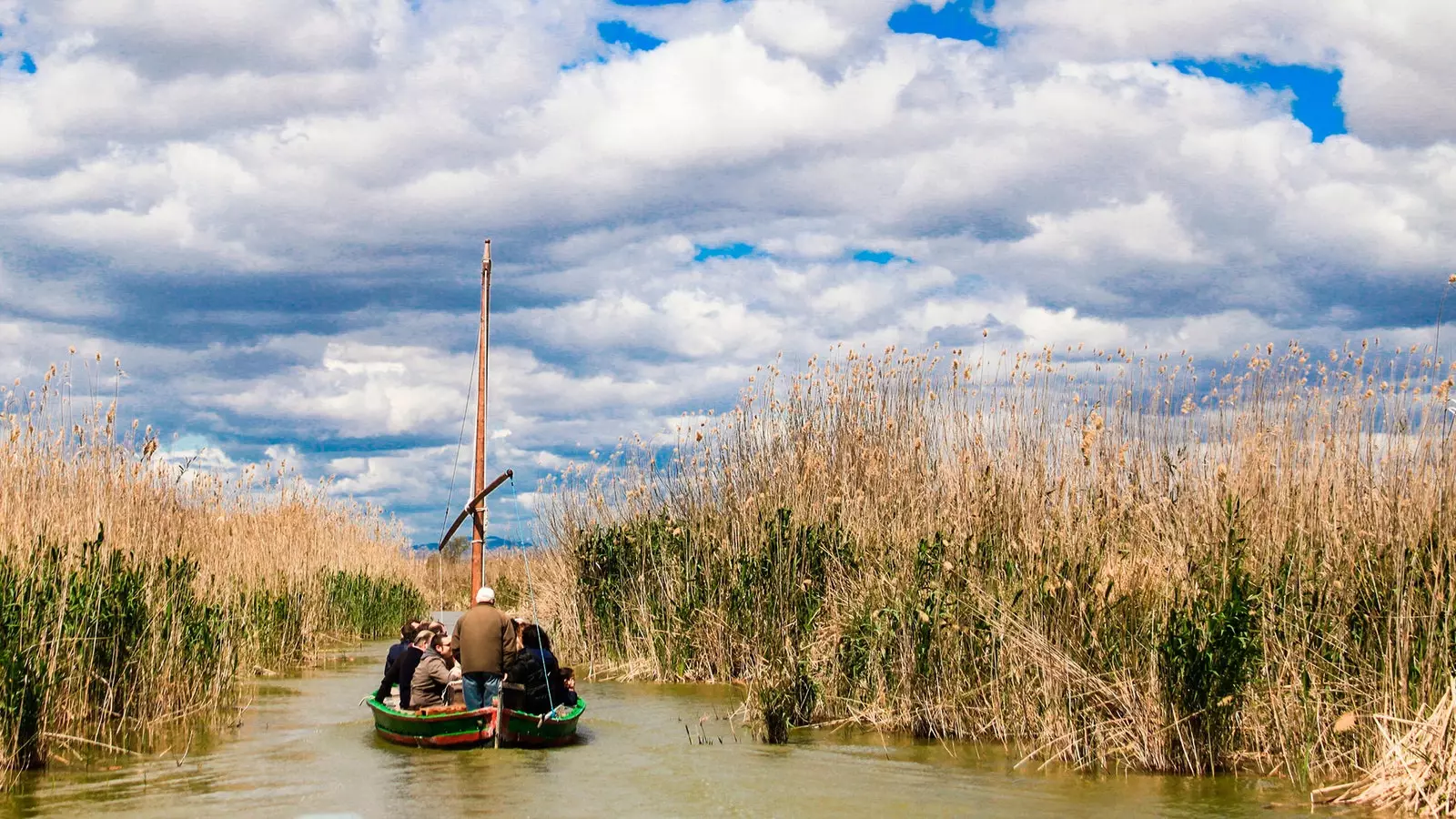
A lagoon in which there are hardly any traces of the romantic fishermen of yesteryear
The magician and promoter of naturalism – a literary style that consists of reproducing reality with documentary objectivity in all its aspects, from the most beautiful to the most sordid and harsh – He perfectly reflected the harshness of that life in his work Cañas y Barro (1902).
The action of the book takes place in the palm tree, a town that is still the most populous urban nucleus in La Albufera – with just under 800 inhabitants – and in which there are still vestiges of his past life.
Today, the population of El Palmar lives mainly from tourism, but a little over a century ago agriculture and fishing were the only ways of earning a living for the humble people who populated the barracks.
There are still some traditional barracks standing, such as the Barraca dels Arandes. The barracks were buildings built with adobe bricks, which had a kind of gabled roof, made with hurdle and straw.
LA LAGOON, FISHING AND RICE FIELDS
Right next to the limits of El Palmar and its fish farm – in which they try to recover some endangered species in the lagoon – they begin the extensive rice fields.
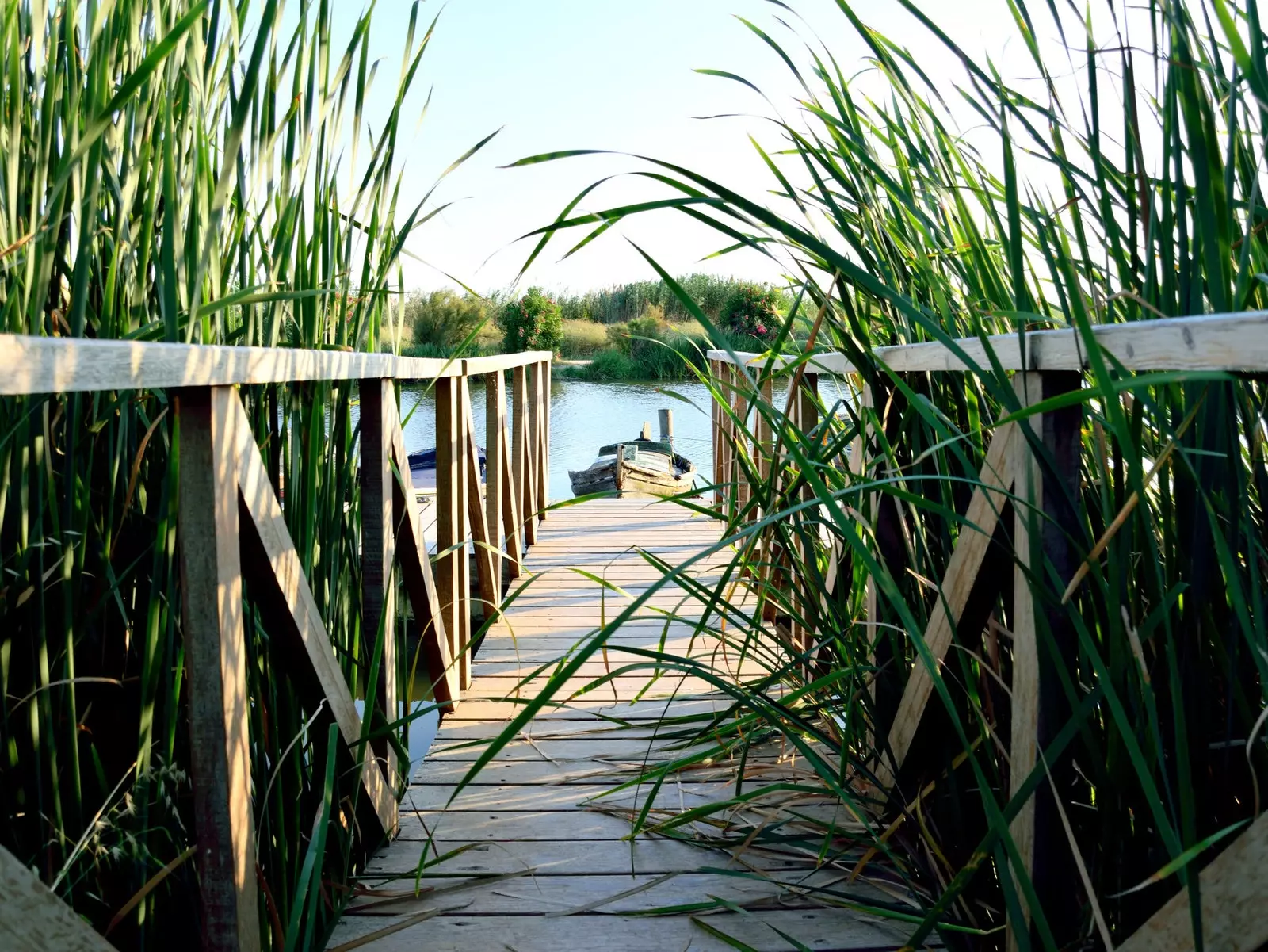
The genius of embarking on a boat tour of this sheet of water
Hectares and hectares of a crop that was brought to the Iberian Peninsula by the Muslim conquerors several centuries ago and that, today, is a symbol of Valencian gastronomy. Not in vain, the rice fields of La Albufera are the largest in the province and here, according to the locals, the concept of paella was invented.
Traditional Valencian Paella – the one with rice, extra virgin olive oil, grated tomato, sweet paprika, saffron, salt, water, chicken, rabbit, green beans and carob beans (large white beans) – and other rice they can be tasted in the good restaurants of El Palmar, highlighting La Cambra Dels Sentits, Bon Aire and La Albufera.
In addition to rice dishes, one of the most demanded culinary proposals in the restaurants of La Albufera is the allipebre (in Valencian, all i pebre) of eels. A kind of fish stew made with a sauce that takes away the sense. In fact, there are several fish farms here where eels are raised, which were once very numerous in the lagoon.
A lagoon in which There are hardly any traces left of the romantic fishermen of yesteryear. Some of the simple wooden boats - known by the name of albufferencs – have found a new meaning in their lives by be used to transport tourists through the canals and the great lagoon.
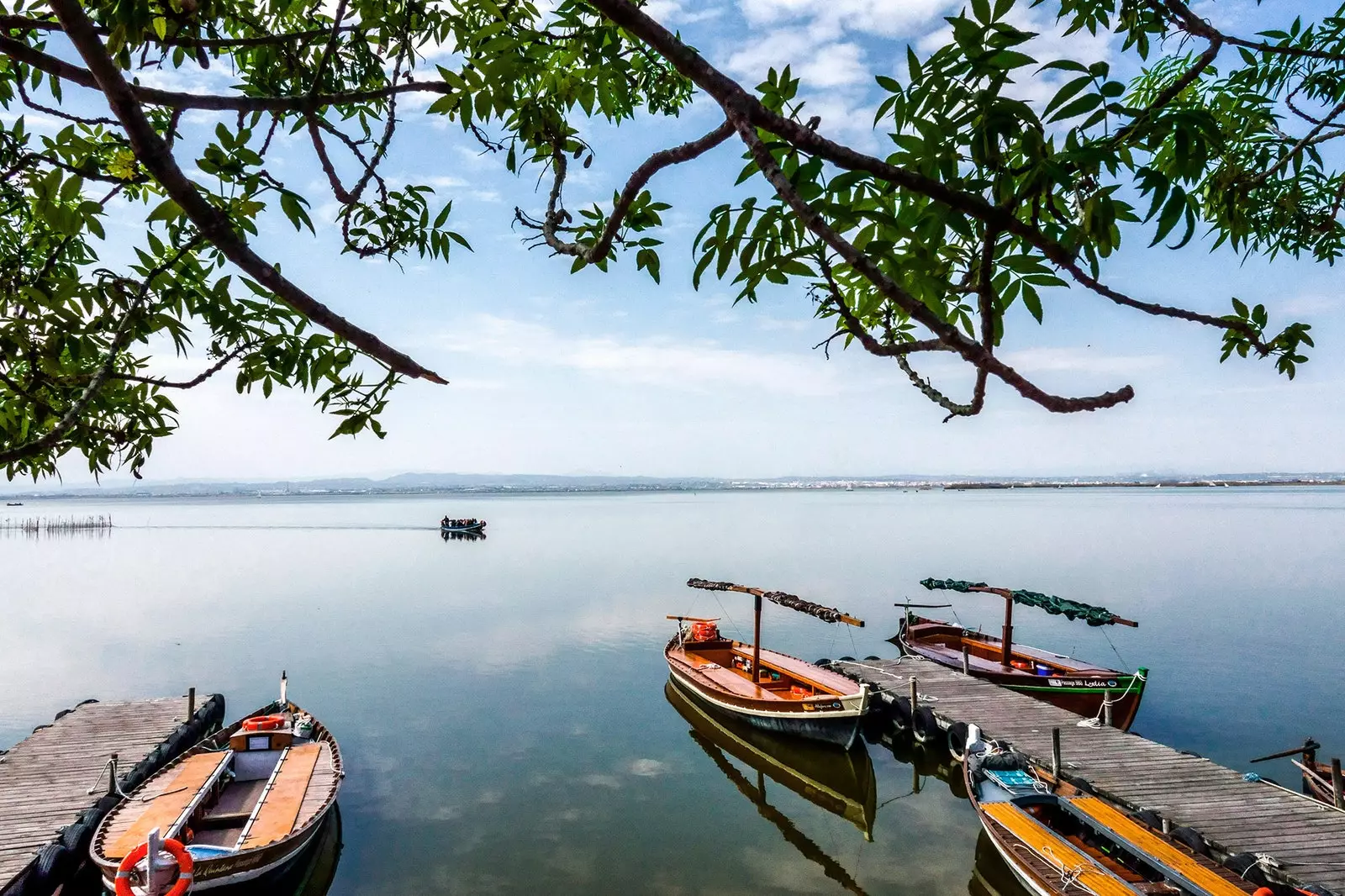
Here it seems that life stops
On the tour, in addition, a local person explains what life was like there before and what fishing techniques were used. Perhaps he heard it from the stories told by his grandparents, who, in turn, would have heard them recounted by their own. Or perhaps he is one of the last romantics still living from fishing and farming in La Albufera.
Be that as it may, in the immense saltwater lagoon they continue sailing those wide and ancient wooden boats, accompanied by the tourist sailboats with one mast, in which a triangular Latin sail is hoisted.
These sailboats multiply at sunset, when visitors decide to enjoy, in such a romantic way, one of the most beautiful twilights in Spain.
BEACHES AND BIRDS IN AN ENVIABLE NATURAL ENVIRONMENT
Along with the sailboats, flamingos with pink fur they peck their food at the muddy bottom of the enormous salty lagoon that barely reaches an average depth of one meter.
In addition to flamingos, there are many other birds that nest in La Albufera or that they simply pass through it to rest for a while in their endless migratory swings. And it is that this place is a dream for ornithologists, having been declared Special Protection Area for Birds (ZEPA) in 1990.
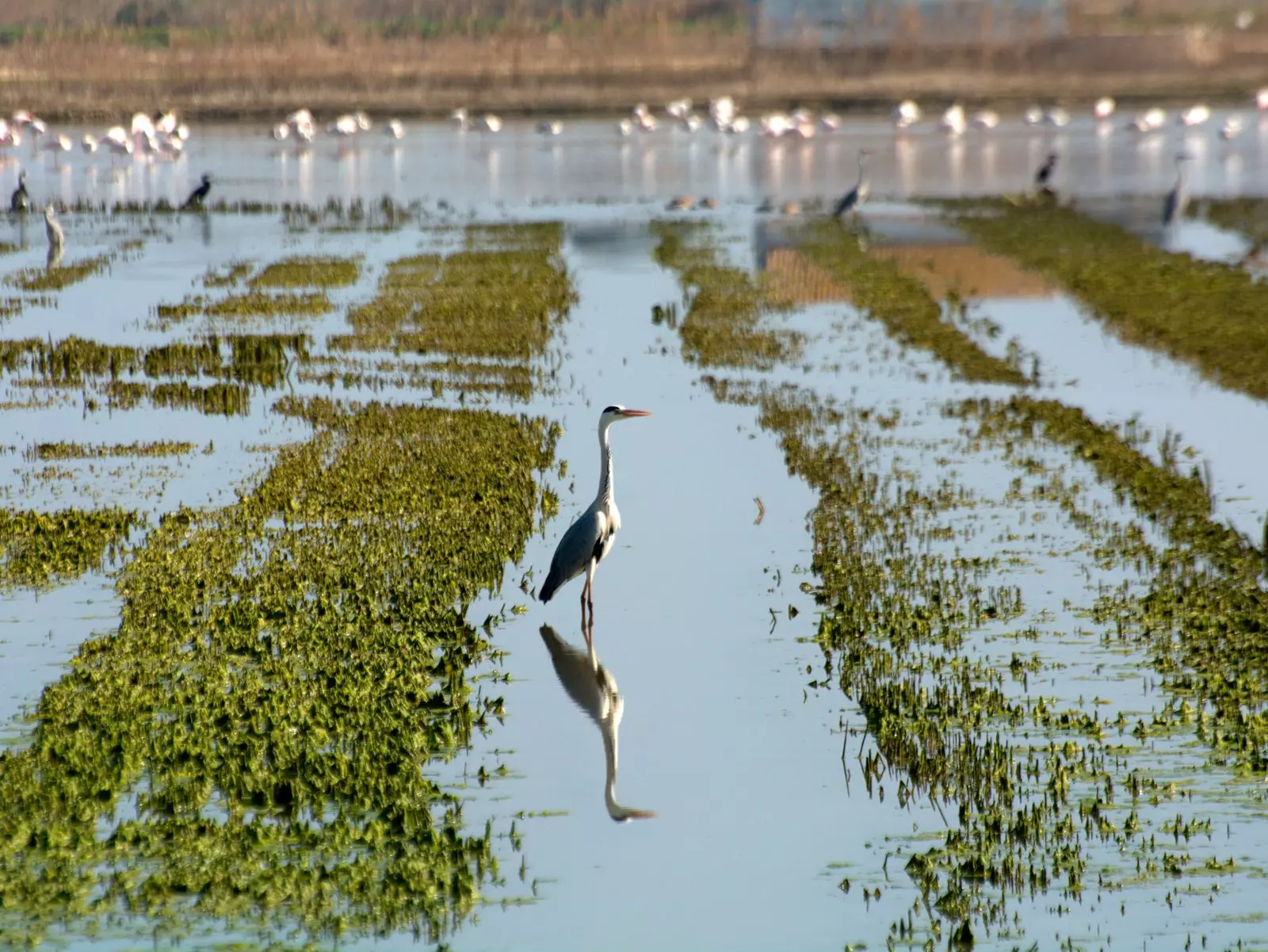
This place is a dream for ornithologists, having been declared a Special Protection Area for Birds (ZEPA) in 1990
Here you can see red ducks, common spoonbills, mallard ducks, gray herons, squacco herons, marbled teals, common terns and, of course, seagulls, always present when the sea is so close.
A Mediterranean sea whose waves lap the extensive and beautiful sandbanks of the three beaches of La Albufera: Saler beach, La Devesa beach and La Garrofera beach.
narrowing them down, a system of dunes that are anchored to the ground thanks to the roots of the pines and shrubs typical of these Mediterranean parts.
You can access this beautiful print through a complete network of trails that people use both on foot and by bicycle. A leisurely way of discovering the natural beauty of a place that, behind its current innocence and calm, hides a past of much sweat, epic and tears.
